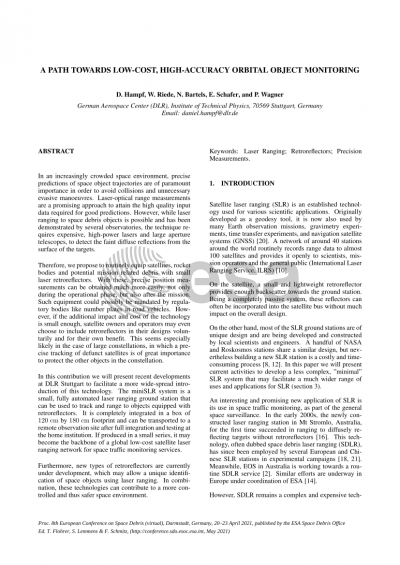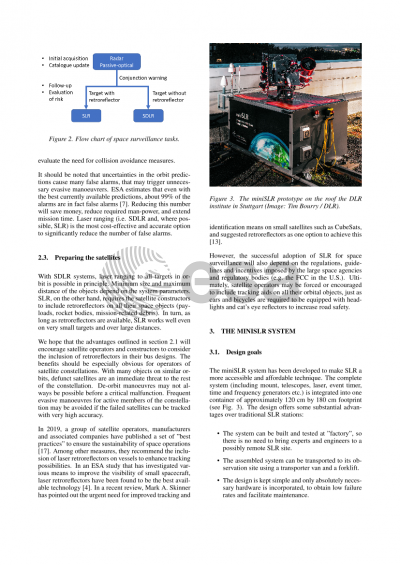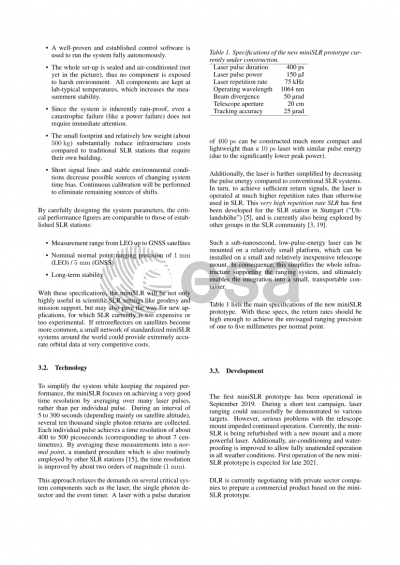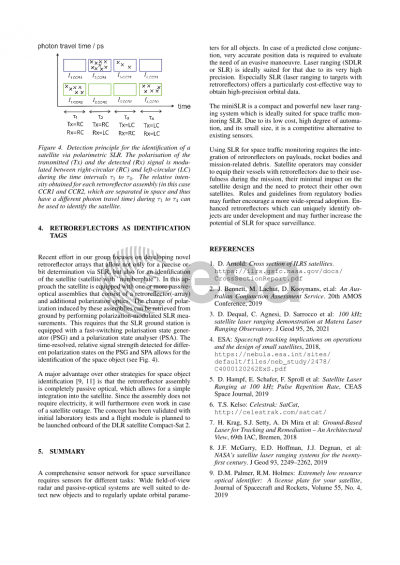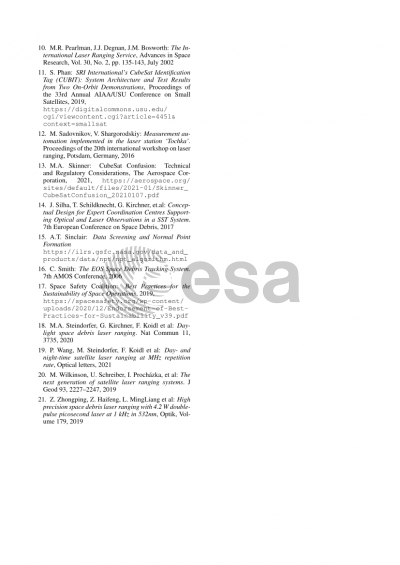Document details
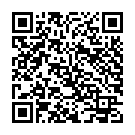
Abstract
In an increasingly crowded space environment, precise predictions of space object trajectories are of paramount importance in order to avoid collisions and unnecessary evasive manoeuvres. Laser-optical range measurements are a promising approach to attain the high quality input data required for good predictions. However, while laser ranging to space debris objects is possible and has been demonstrated by several observatories, the technique requires expensive, high-power lasers and large aperture telescopes, to detect the faint diffuse reflections from the surface of the targets.
Therefore, we suggest to routinely equip satellites, rocket bodies and potential mission related debris with small laser retroreflectors. With these, precise position measurements can be obtained much more easily, not only during the operational phase, but also after the mission. Such equipment could possibly be mandated by regulatory bodies like number plates in road vehicles. However, if the impact and cost of the technology is small enough, satellite owners and operators may even choose to include retroreflectors in their designs voluntarily and for their own benefit. This seems especially likely in the case of large constellations, in which a precise tracking of defunct satellites is of great importance to protect the other objects in the constellation.
In this contribution we will present recent developments at DLR Stuttgart to facilitate a more wide-spread introduction of this technology. The miniSLR system is a small, fully automated laser ranging ground station that can be used to track and range to objects equipped with retroreflectors. It is completely integrated in box of 2 x 2 x 2 metres and can be transported to a remote observation site after full integration and testing at the home institution. If produced in a small series, it may become the backbone of a global low-cost satellite laser ranging network for space traffic monitoring services.
Furthermore, new types of retroreflectors are currently under development, which may allow a unique identification of space objects using laser ranging. In combination, these technologies can contribute to a more controlled and thus safer space environment.
Preview
